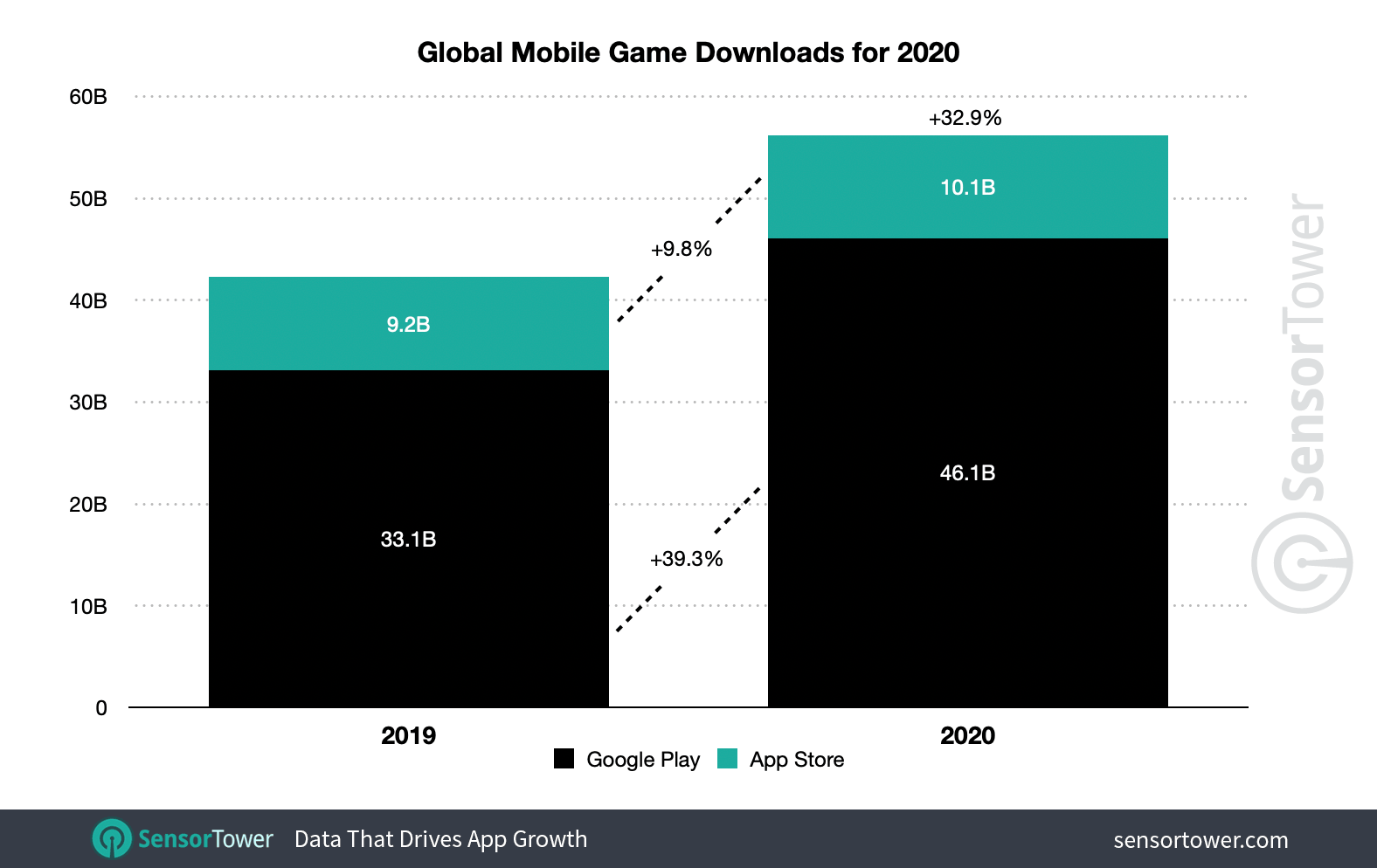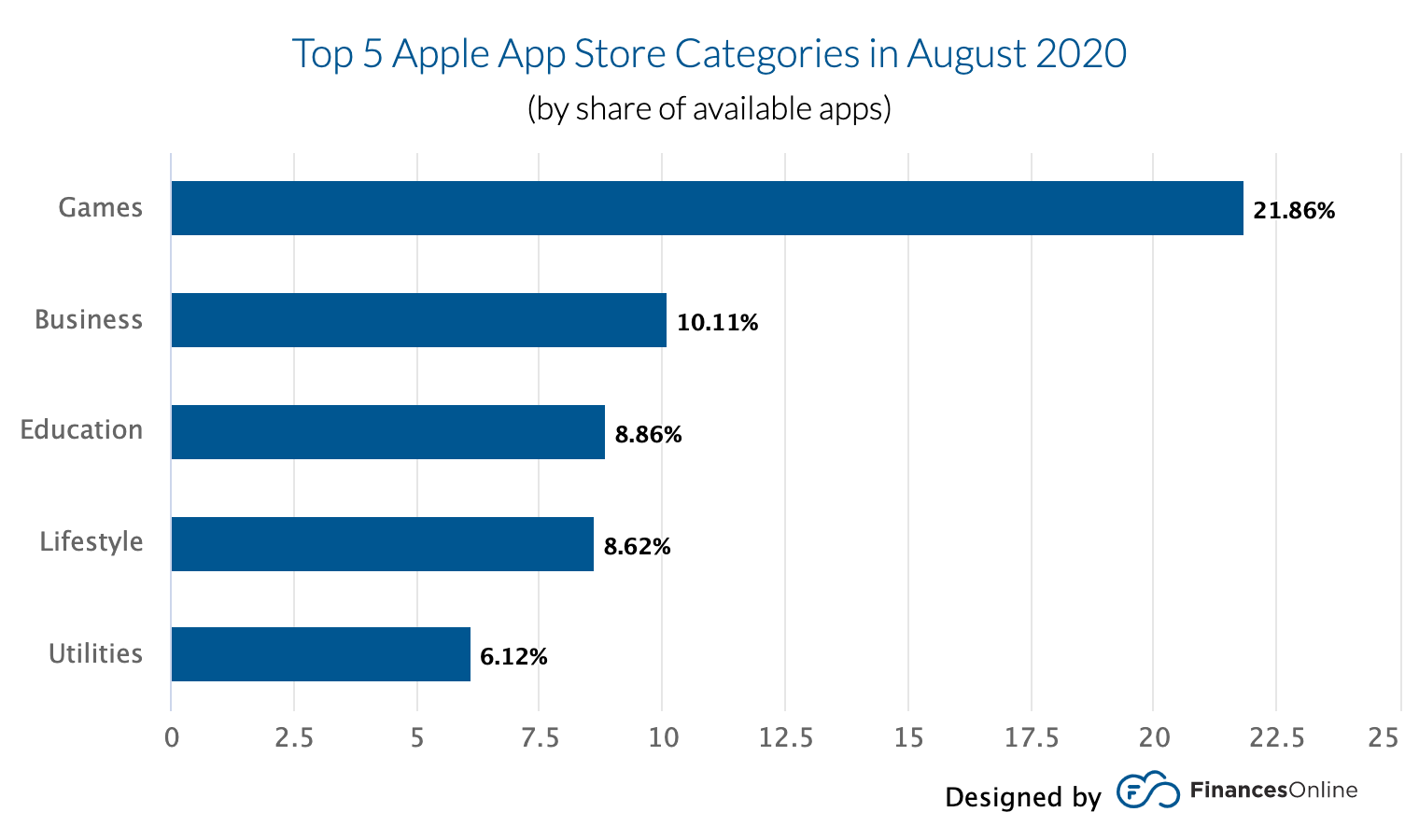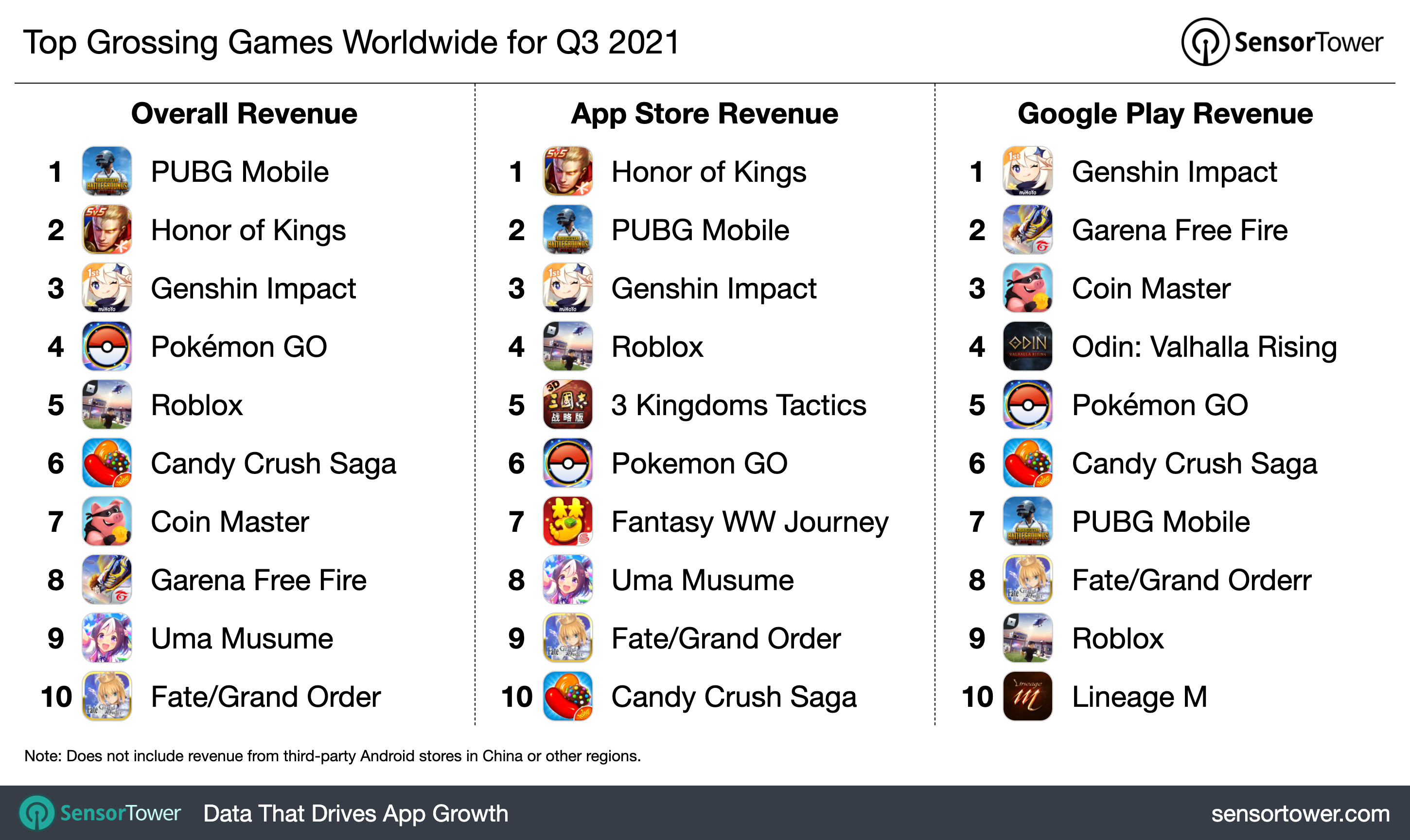Introducing the Vertical Deep Dive Series, where we examine the inception, major growth or decline points, and other major trends in each of the top verticals in mobile. In our first feature, we'll explore the success of mobile gaming. We'll begin with the inception of gaming 27 years ago, all the way through the pandemic boom, and what we can take with us into next year.
The mobile gaming industry has progressed tremendously over the years. What began as steady growth turned into a surge of advancement in 2020, the year of the pandemic. While the pandemic caused some businesses to shut down, the reverse was the case in mobile gaming. Mobile gaming became a popular avenue for people to spend their time while on stay-at-home orders. In 2020, mobile gaming became one of the highest performing industries globally, reaching a record-breaking $79.5B in revenue, a 26% increase from 2019. This number is expected to increase in the next few years.

Source: Sensor Tower
Let’s review the factors behind the enormous gains of mobile gaming. Here, we take a deep dive into the mobile gaming sector; including its inception, growth trajectory, current landscape, and future trends.
History of Mobile Gaming
There is no doubt that the mobile gaming vertical has seen tremendous growth. But, how did it all begin? Let’s rewind and take a closer look at the history of the vertical.
First-Ever Games
The first ever mobile game was introduced in 1994. Preinstalled on the Hagenuk MT-2000 mobile device was none other than the popular arcade game, Tetris. The minimalistic, easy-to-play game had users hooked.

The next game to rise in popularity was Snake, launched in 1997 on the Nokia 6110 device. Often mistaken for the first-ever mobile game, Snake’s simple yet addictive nature remained popular for years. Both Snake and Tetris were the first in a largely popular category that would one day be known as “hyper-casual games”.
The Hyper-Casual Surge
The App Store was created one year after the first iPhone launched in 2007. A mere 500 apps were offered in the app store in 2008, with Texas Hold’em being the very first gaming app. In 2009, Angry Birds was released, setting the standard for mobile games in the decade to come.
The Angry Birds game was initially launched in response to the 2009 Swine Flu pandemic. The creators of the game positioned pigs as “enemies” of the angry birds. Since its initial release, Angry Birds has been installed over 100 million times (Sensor Tower). Since then, other versions of the app and even two movies were launched as part of the Angry Birds franchise. Angry Birds set the stage for mobile games in the 2010s. In doing so, it represented the growing popularity of casual games, which were designed to be played with ease.
Candy Crush and Clash of Clans, both introduced in 2012, were part of the next wave of games to lead in popularity. Modern day mobile gaming still contains a large category of casual and hyper-casual games. But, the advancements of smart-phone devices brings with it a multitude of genres of mobile games, including mobile video games. Next, let’s take a look at the current landscape of the mobile gaming vertical.
Current Gaming Trends
Today, there are over 1 million active gaming applications on the App Store, representing 21% of total apps, and the highest number of apps out of any category. Game apps account for more than 70% of all App Store revenue, and 81% of the top 200 most profitable Android apps are games. With so much competition in the mobile gaming market, how do most gaming app developers stay ahead of the game?

Source: Pocket Gamer; Statista 2021 (Finances Online)
Monetization: In-App Ads and Purchases
One of the biggest keys to the mobile gaming industry’s success is monetization. Most games in the app store are free-to-play. These apps are often monetized through in-app advertisements and purchases. The popular monetization method of showing in-game ads has the backing of most mobile developers and gaming users alike. Growing in-app inventory allows marketers to diversify their media budgets with an additional digital channel. While some game developers may be weary of interfering with the user experience, there is a growing acceptance of in-game ads among mobile gamers. Eighty-two percent of mobile gamers prefer free mobile games with ads to paid mobile games without, and 74% of US mobile gamers would watch an in-game ad in exchange for an in-app perk (Business of Apps).
Meanwhile, in-app purchases allow users to pay real money for features or items. This can often mean unlocking a new level, getting extra lives, or buying in-game coins. In 2020 alone, revenue generated through in-app purchases of games on both the App Store and Google Play Store grew by 51.3% (Sensor Tower). With the growing competition of mobile games in the App Store, it is critical for mobile game developers to successfully monetize their apps.
Top 10 Mobile Games in 2021
Now that we know how mobile game developers stay profitable, let’s examine which ones are currently topping the charts.

Source: Sensor Tower
In Q3 2021, PUBG Games led the pack, with Honor of Kings, and Genshin Impact following closely at numbers two and three. The top two spots were claimed by industry leader, Tencent, the world’s largest video game developer. Pokemon Go, reaching number 4 in the top 10 gaming apps of 2021, is an example of the augmented reality (AR) category of mobile video games.
Technological breakthroughs gave way to a myriad of genres while advanced mechanics and UI gave users access to things like augmented reality on their mobile devices. As such, the mobile video gaming category has risen through the ranks.
Remarkably, Candy Crush is still in the top 10 of mobile gaming ads, almost ten years after its initial release. Proving that while mobile video games lead in revenue in 2021, hyper-casual games remain popular no matter the current trend.
Future Trends in Mobile Gaming
With this in mind, it’s a wonder what the future of mobile gaming has in store. We will likely continue to see the mobile video gaming category top the charts in popularity and revenue; especially as more advanced devices and faster networks aid in the development of mobile-based cloud gaming services and augmented reality (AR) games. Perhaps such advancements in technology will even bring new gaming categories to mobile users’ fingertips. By 2030, the mobile gaming market is forecast to grow to $272 billion in revenue. Let’s explore the trends that may impact this enormous level of growth.
Meeting Demands in the Privacy Era
Apple’s changes to its IDFA may continue posing a challenge for developers, with targeted advertising becoming harder than before. That being said, with user segmentation based on monetization and contextual targeting, app developers can still drive user installs and re-engage churned users even in the privacy era.
In-Game Social Features
Social features in mobile games are part of a growing evolution of social experiences in mobile gaming. These can include in-game chat rooms and social media connections. People craved social connection during the pandemic, and this pushed in-game social features into the spotlight. In in-game “hangout rooms,” gamers have a space to interact with one another and perhaps show-off their new advances within the game, such as weapons, gear, or coins. Nowadays, roughly two thirds of the top 50 mobile games in 2021 have at least one social feature (App Annie).
Mergers & Acquisitions
With larger gaming companies, such as Tencent, EA, and Nintendo reaching new heights in performance, a wave of mergers and acquisitions may continue transforming the mobile gaming industry. Likely driven by the massive growth in mobile gaming during the pandemic, the consolidation of mobile games may lead to greater stability in the industry. It is true that some mobile game developers who fail to monetize their apps may struggle to stay afloat. However, some independent gaming companies simply lack the resources to grow. Those who are able to consolidate can use the added resources to their advantage. As such, they may be able to take more creative risks in the future.
Takeaway:
The mobile gaming industry has seen huge advances in recent years, and it shows no signs of slowing down. The year 2020 was record-breaking for mobile games, with $79.5B in revenue and the industry is expecting to see $90.7 billion in revenue in 2021. In this piece, we broke down the mobile gaming industry, from its inception to current and future trends.
- History of Mobile Gaming: Casual and hyper-casual games grew in popularity since the inception of the first ever mobile game in 1994. The advancements of smart-phone devices, however, brings with it a multitude of genres of mobile games.
- Current Mobile Gaming Trends: Mobile game developers focus on monetization to stay competitive, typically in the form of in-app advertisements and purchases. In Q3 2021, the mobile video game category topped the charts. Showing how technological advancements allow new genres to be accessible at mobile users’ fingertips.
- Future Trends in Mobile Gaming: With over 1 million active gaming apps in the app store, the increasing competition means developers need to be smart and take creative risks. This includes meeting demands in the privacy era, developing new features based on relevant trends, and perhaps even consolidating to increase resources.

